Rock climbing may seem easy at first but once you try it yourself you realize it looks easy only when you watch professional rock climbers – they have already mastered the art of rock climbing. It isn’t that intuitive at first and there are techniques you need to learn so that you can begin building up on them and improve your climbing skills.
[the_ad_placement id=”in-text-1-type-r”]For example, beginners tend to focus on using their hands first, rather than focusing on leg techniques. It is far easier to use your legs (which are much stronger) rather than your hands (they tend to be weaker in comparison). This is just a small example of the things you need to be aware of while learning to rock climb and apply them consciously. With time, you will get used to these techniques and moves and you will use them subconsciously. This is when you have mastered the basic principles and can build on that to become better and better.
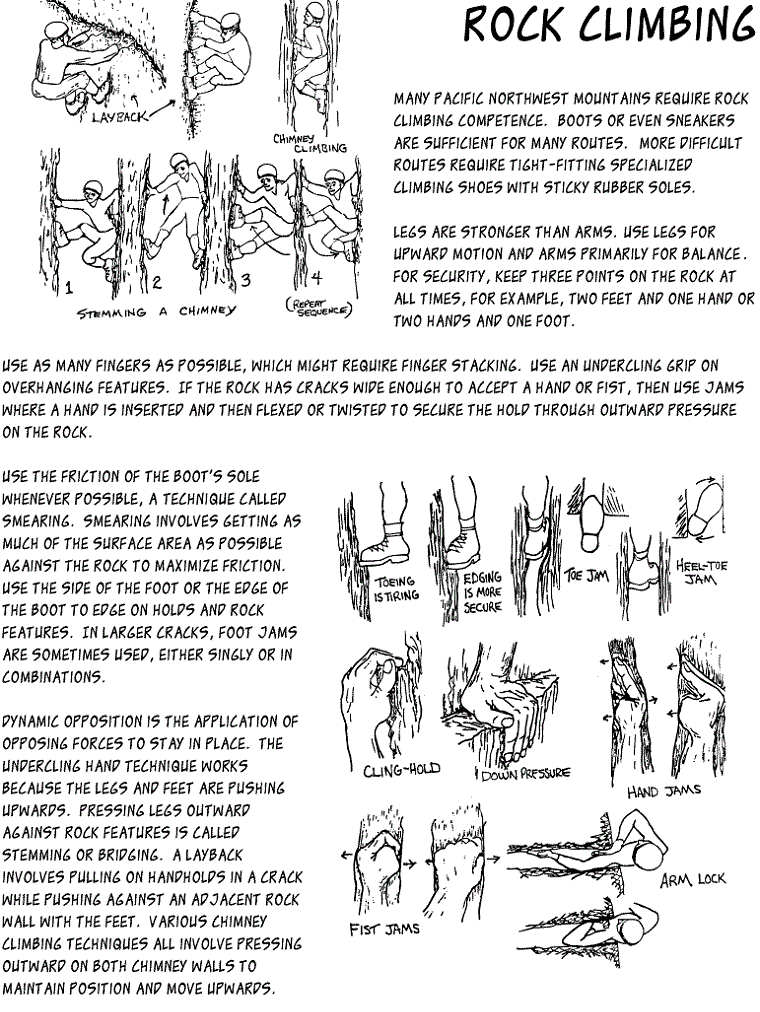
In this article we will share with you these important techniques and moves so you can build confidence faster than just hoping to pick them intuitively. Practice these techniques every time you’re in the rock climbing gym or climbing a real rock face. Be aware of your moves and decisions and don’t rush. Speed will come with time and a lot of practice.
How to rock climb for beginners
Here are some useful techniques you should try and apply every time you go climbing.
Warming up and stretching
At first it may not seem like a necessary thing to do, but the truth is that warming up and stretching can significantly improve your techniques and moves when you start climbing. Usually 30 mins of warming up and stretching will improve blood circulation and muscles and ligaments that tend to receive less blood flow, will be charged up. This tends to improve your reactions while climbing giving you also the possibilities to make more difficult moves and postures, thus getting you ahead on the rock face or climbing wall.
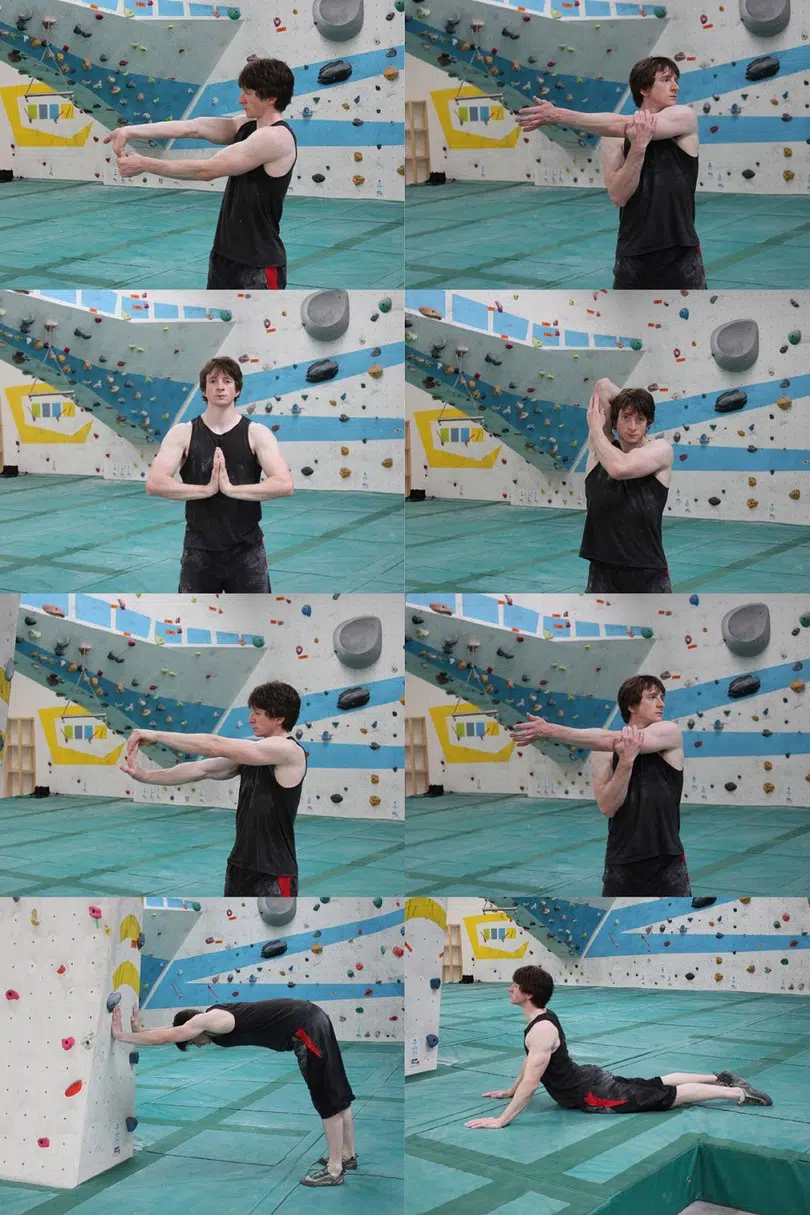
Stretching and warming up also awakens muscle groups which tend to be neglected during our daily life and routines. As you go climbing these muscle groups will begin working, so warming them up and stretching them will give you a head start.
Improve climbing, strength comes later
Before you have the strength you need for harder climbing routes, aim at learning proper climbing techniques on the easier routes. Try to becoming better and better at the easy routes before you go test yourself on the harder ones. Also, strength comes with time, so don’t think that being stronger will make you a better climber.
You need to have accurate moves and make the right decisions while climbing. This is of utmost importance. Aim at perfection, good static and/or dynamic climbing. See our reviews of the best climbing ropes to help you learn more.
Relax your grip
It may seem counter-intuitive at first, but holding too tightly on the rock will actually make your techniques and performance worse. Not only that, but giving too much of your strength to your gripping technique will quickly wear you out and you will tire much faster. Many professional climbers tend to climb with ease and as less tension as possible. That gives them the flexibility and speed they need while climbing. Otherwise, you are slow and rigid on the rock or wall face and thus your entire posture, techniques and moves suffer as a result.
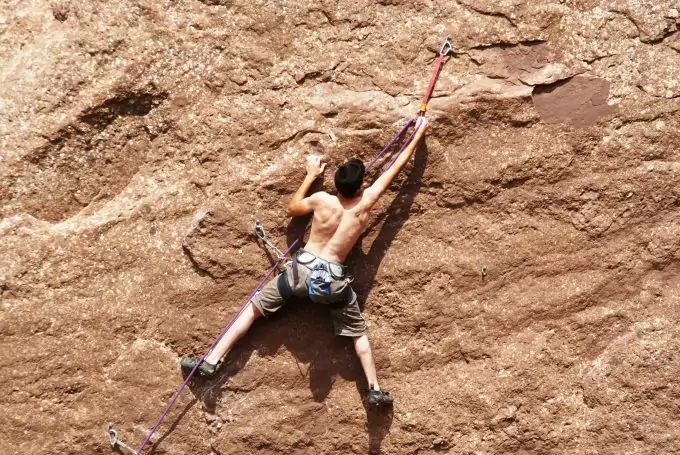
Try to think about your grip and how much strength and tension you put in your moves. Consciously try to relax a bit and think of your climbing as if you’re fluid and flexible like water – without much resistance you’re still climbing up.
Challenging footholds
It may sound counter-intuitive but arranging bad footholds can actually improve your posture and moves. Footholds which are too far apart and difficult to stand on them will help you focus better on how you choose to climb. Also it will help you get the strength you need, since footholds too far apart require strength from your leg muscles.
Your hand grips should be good though, since they will provide you with some security when you grip them, but your footholds will keep you always in alert mode and force you to use as much strength as you have, pushing your limits and making you stronger as a result.
Balancing technique
Balancing is one of the most crucial techniques you need to learn and eventually improve. Without a proper sense of balance you won’t be able to climb a wall well enough, your energy will be spent very rapidly and you will tire just as fast. Most beginners haven’t practiced balancing techniques before and thus they don’t know how to climb properly.

Image credit: rockandice.com
So, when you go climbing, think of your balancing point of your body – it is somewhere in the middle (your belly) or will always be at the center – however you are positioned on the wall. Focus your mind on that center point and try to sense how your weight can actually be used to make climbing easier. You can use your balancing point to move ahead. To test your sense of balance and improve it, try this exercise.
Find a 60-degree slab or wall so that you can traverse it without using your hands. Simply focus on how you position your feet and where you step, and most importantly – focus on your balance. Use your hands only when you need to stop yourself from falling. Otherwise, try not to use them, so you know where your weak spots are and work on that.
Stay close to the wall
It is important to note that the closer your body is to the wall, the better you are capable of using your balancing techniques at an optimal level. This means that you can balance much easier and with less effort. Your knees should rarely point towards the wall, but should be away from the wall – in this posture your body will be as close to the wall as possible.
[the_ad_placement id=”in-text-2-type-r”]Lean away from the wall only when you try to see your route ahead, otherwise, keep yourself close to the rock face and monitor your steps closely. Doing this also improve your accuracy during the climb. Also, keep in mind that if you keep your posture more erect (your legs are at a straight position) the more you’re out of balance and thus, your center of gravity will move away from your grip and wall. So, as you can see, keeping close to the wall is tightly linked to a better balancing technique.
The back-step technique
This technique means that you can shift your right or left foot edge so that you push your corresponding part of the hip towards the wall. This means that if you step with your right foot on a foothold, you then rotate your right hip towards the wall and slightly shift your right foot – almost like dancing. Most professional climbers do exactly this move. They rarely climb facing the wall like a lizard. They climb usually slightly at an angle from the wall’s face.
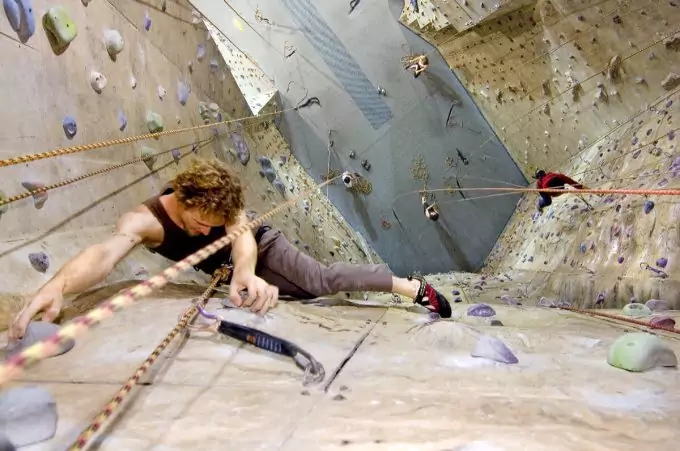
Using this technique will also help you match your steps much quicker. Let’s assume you set your left foot on a foothold and then you match it with your right foot and then you perform the back-step with your right foot. This combination of moves takes time and energy. Learning the back-stepping technique will get you to immediately use your right foot at a back-step position without wasting precious energy.
Standing up
What this means is that it’s far easier to use your legs to propel yourself up. To make sure you’re doing it right you must always look at your hands – are they fully stretched as you hold your grips? If yes, this means that hopefully your legs are at a squat-like stand. In order to move ahead on the wall, push yourself using your legs, and your hands should only keep you from falling and maintain your balance.
Rarely should you use your arms’ strength to pull yourself up (unless you’re climbing a boulder). It is also important to move upwards only when you’ve secured a nice foothold position. Only then flex your arms and push (with the legs) and pull (with the arms) yourself upward.
Be smart when using your fingers
It is often the case that beginner climbers tend to break finger tendons in their first years of climbing, usually within 3 years. They believe that as they began climbing and improved their techniques and had built strength they can rely far better on their hands and fingers. With several years of practising climbing your finger tendons haven’t still gotten the chance to become stronger. The more you push yourself to harder climbing routes the more you risk breaking tendons.

Image credit: verywell.com
You may have gotten a false sense of strength and resilience, simply because you can see your musculature building up. While this is fine (you may have the strength) you may confuse it with the resilience in your fingers and their ability to withstand great pressure and stress when you hang from smaller and tinier holds (instead of open-hand grips, using your palm to hold). Beware of this and protect your fingers. Build up your tendons and fingers little by little and don’t push yourself on routes that are too harder and the holds are too small.
3-points contact
This means that at best you must have three points where you contact with the wall – two feet and one arm, or two arms and one foot. The fourth foot or arm should be use to help you proceed ahead. These three points of contact will keep you hanging safe to the wall while you’re trying to find the fourth secure grip or hold. This practice will also help you use far less energy and will get you onto a more fluent and smooth path upward.
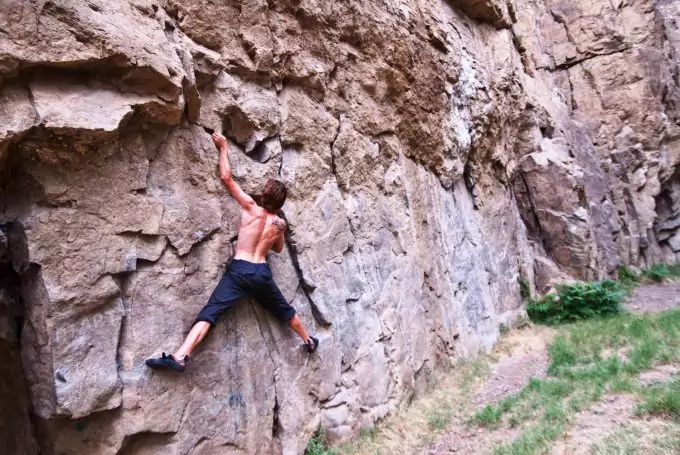
Also, trust your climbing shoes – the rubber creates a good solid grip with the wall or rock, and if you had found a good hold there is virtually no chance for you to fall. Of course, if the hold is tiny, you should be more careful.
Static climbing technique
This type of technique is useful for beginners because you have to use only static movement of muscles instead of body momentum. Using your momentum is practical when you need to be quick and is also possible when you’re an advanced climber. Yet, to get used to climbing it’s better to use the static movement.
The way this works is to first move your legs and arms and then move your body accordingly. This is extremely useful, because it doesn’t take much effort to position your arms and legs and then to shift your body weight. This technique keeps your energy for more difficult traverses. Dynamic movement also used this technique but in a more fluid way, meaning that both limbs and body weight are shifting almost together in one smooth motion.
When you apply this technique put most of your pressure on your legs, while the arms will keep your balance. You can first decide on your hand grip while your body is motionless. When you have a solid grip, shift your feet to plant your body weight firmly and then move your body to shift your position. Also, notice how much noise your feet make, while you try to find a solid footing. If you tend to move your feet too much and you hear a lot of noise from them, then your static technique isn’t good – try to improve it.
Dead point technique
This technique is related to the above, but uses your dynamic and momentum of shifting your body weight. It is similar to the above version, but slightly more advanced and requires that you have more experience in climbing. If you have mastered the static climbing technique, then you can proceed to using the Dead Point technique.
[the_ad_placement id=”in-text-3-type-r”]The idea is that you can shift both your weight and limbs together, thus making your entire movement up the wall one fluid motion. As you decide to reach a higher point, you may realize that it’s a bit further than just stretching your arm and grabbing the grip. You need to propel your body up, so you can grab the hold. This motion also requires explosive strength, and if your hands and legs aren’t still that strong you should try to do this technique.
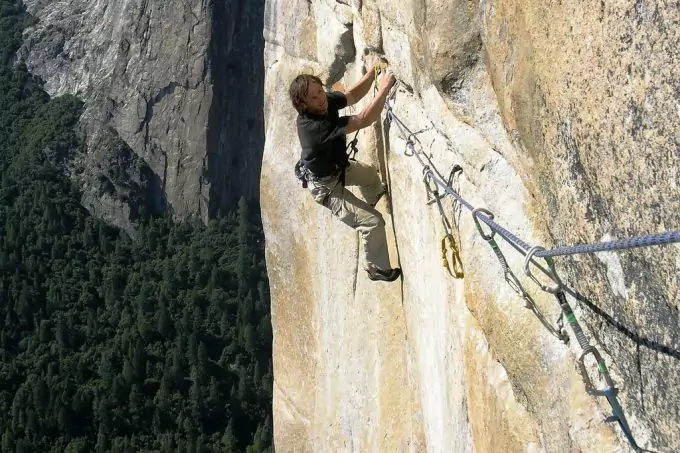
As your body is directed upwards, this is called the dead point – your body is in motion and the weight hasn’t settled yet. The moment your body should begin to go down, you must have reached the intended grip. This means you should be able to properly calculate if you can hold that grip or not.
In order to practice the dead weight technique and do it in low altitudes you can simply go to the boulder wall and try this move there – it is definitely more challenging, but you will get the idea about this technique. Bouldering uses almost always only the dead point technique because it requires strength and explosive muscle power. Static climbing doesn’t work that much when you go on the boulder wall.
Proper falling techniques
Falling is a natural part of climbing. Learning how to properly fall in your early stages of getting used to climbing in the first place is of crucial importance. Proper falling will also ensure you don’t injure yourself during the fall. Of course, most people new to climbing are scared of falling even if they are secured on the rope. And since any climber has experienced falling, you need to overcome that fear, face it and learn to fall properly.
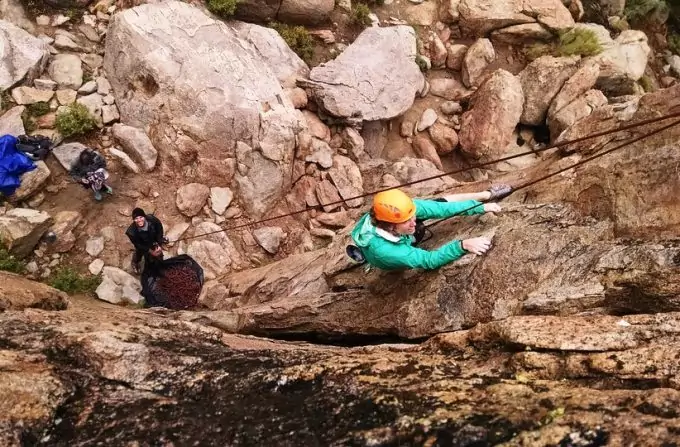
Because you need to go through your fears, here is how to make sure you will fall without causing yourself any injury.
Make sure:
- The rope is clear and hasn’t looped into anything – your feet, arms, gear, etc. The rope must be clear and completely loose on your track, so you can rely on it when you fall
- You are aware of the irregularities on the wall below your feet – this means that if you know what’s below you, you will know how to keep away from it and not hit some bolt, foot hold or similar
- You push yourself away from the wall immediately when you slip your grip. Pushing away from the wall will ensure you won’t hit some of the wall’s rocks, irregularities, etc. Keep your body at legs’ distance – doing so will protect you from hitting the wall, thus use your feet
If you follow these techniques above, you should be safe however you fall – suddenly or if you expected it. The more you practice falling, the more intuitively you will protect yourself next time you fall.
See also: Best Carabiner: A Brief Buyer’s Guide and 8 Carabiner Reviews
The most important thing to remember though is to practice climbing. There is no better way to apply the above advice and techniques than to just go out there and climb. As we all know, practice makes perfect, so use your time wisely and be aware of your moves and techniques. As long as you are conscious about how you climb, you should get better and better with time.
Before your next climb, check out our article on climbing rope techniques to find out more.


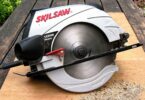


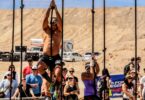
One of my acquaintances encouraged me to go rock climbing with her, and it was immensely enjoyable. One thing I grasped was that rock climbing is actually about resourcefulness, art, and endurance, among a bunch of other things. I dropped in with some athletic shoes and comfortable sportswear and a backpack of chalk and left with raw hands and a gigantic beam. I’m going to be adding rock climbing to my schedule.
Hey Boyd,
Rock climbing is a great full body workout in itself and investing in sturdy boots and tough gears will help you develop better skills. You can also try out some indoor wall climbing circuits. Most will have technical walls that can help your mind plan your next move.
Thanks!
Samuel
There’s an article that discussed how artificial rock climbing pales a hundred times than the actual thing; how climbers think a good number of hours in the gym and even a badge of some sort tricks the climber that he has been fully trained to take on the real thing. Well, we all have to start somewhere but for an aspiring legit rock climber, this article would be very helpful because there won’t be safe harnesses to keep them in place should they slip.
Among all survival skills that one can learn, rock climbing requires practice. The knowledge won’t do the trick if you have not engaged the real thing.